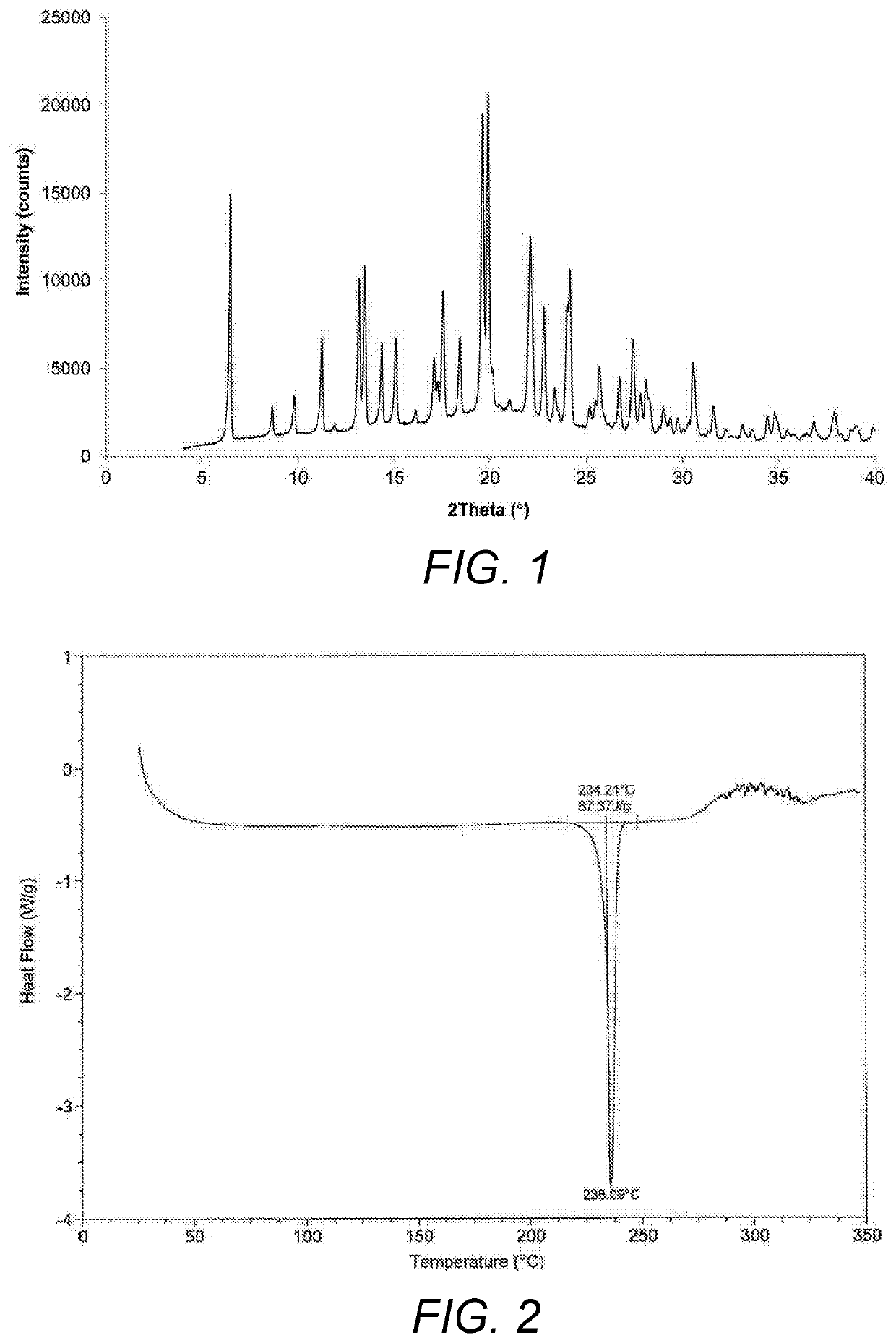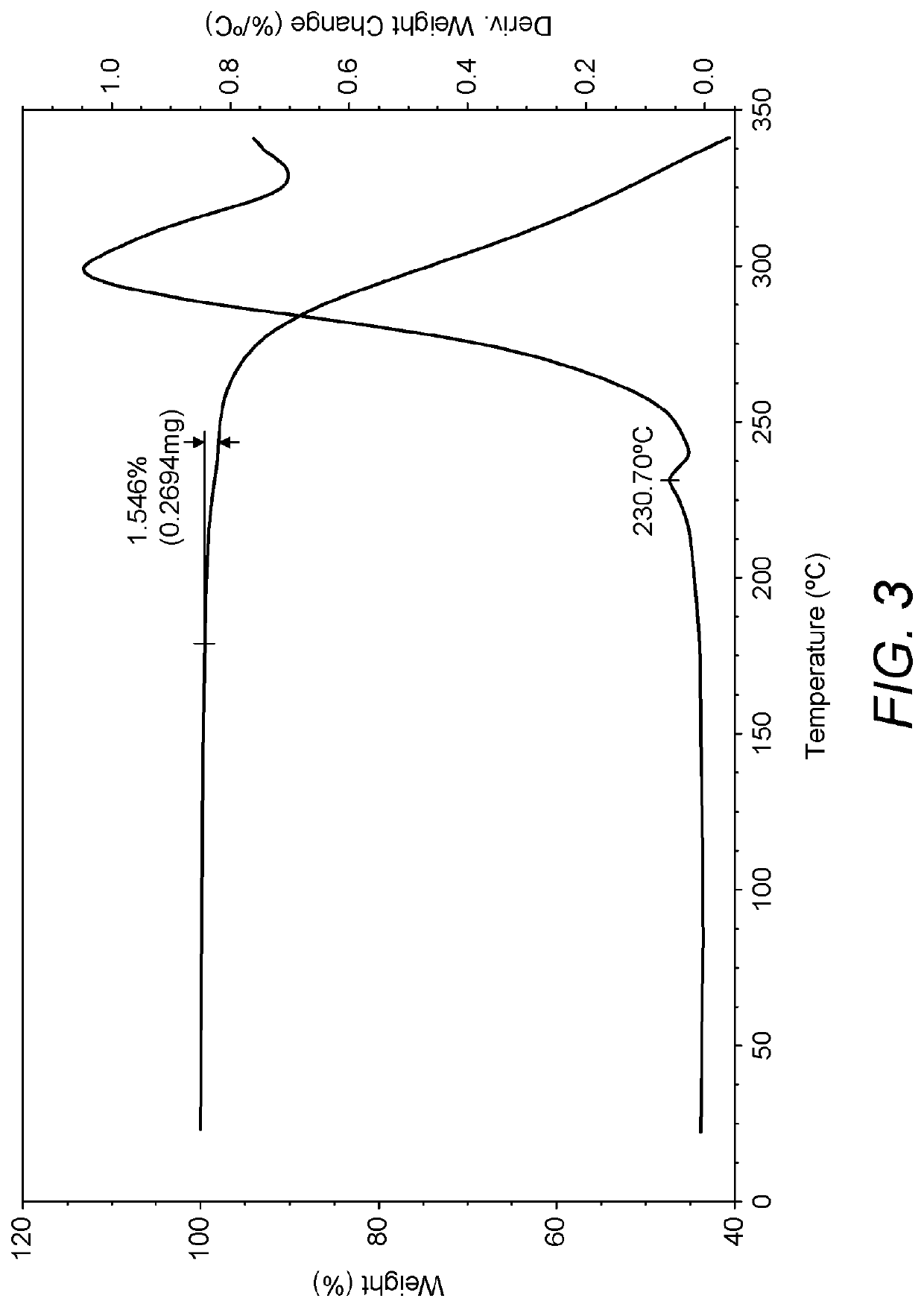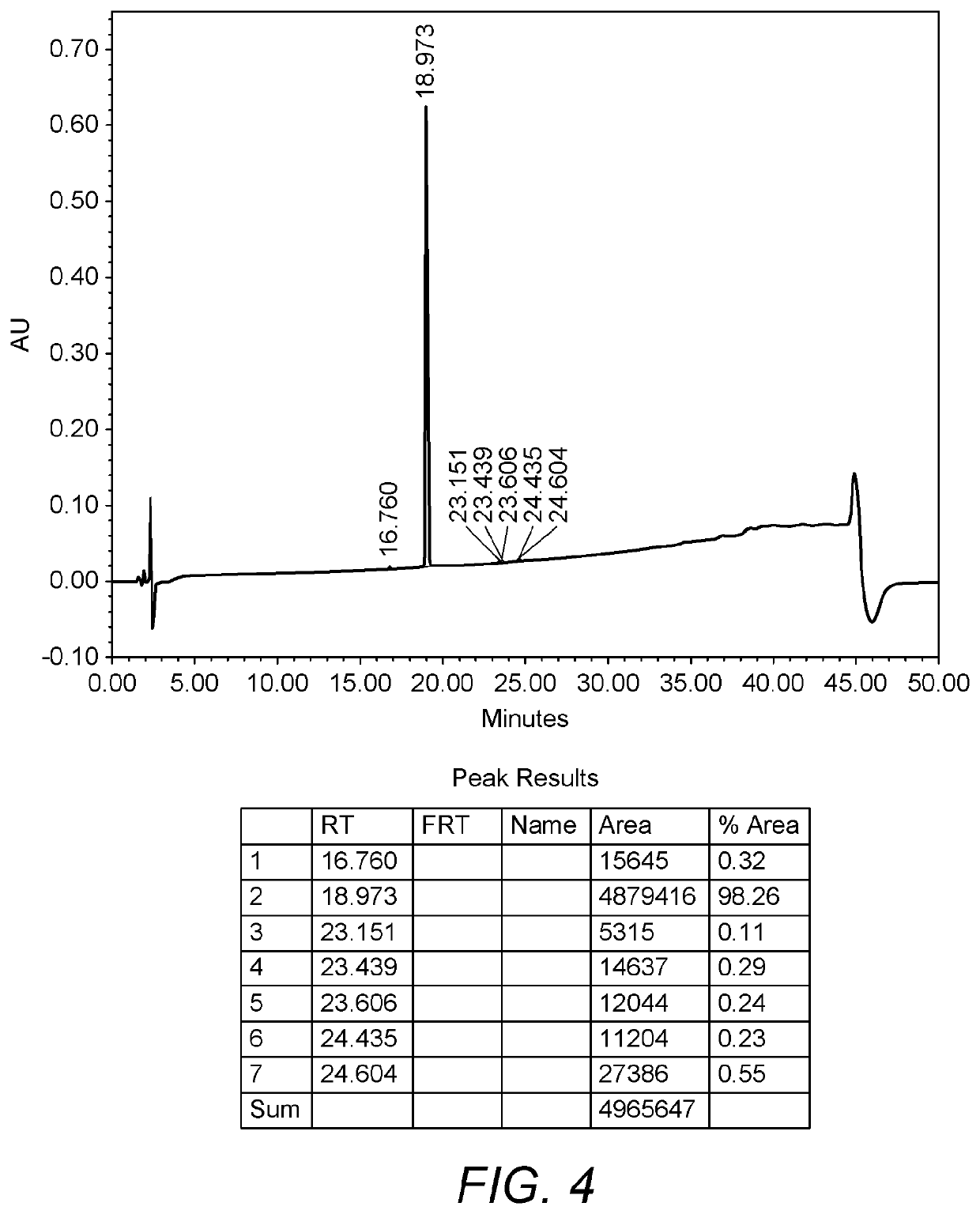Process for the preparation of umeclidinium bromide
a technology of umeclidinium bromide and process, which is applied in the field of process for the preparation of umeclidinium bromide, can solve the problems of complex process, low yield of compound formula (ii) (39%), and not the best solution for an industrial application, so as to improve chemical reaction efficiency, increase chemical yield, and save time and resources
- Summary
- Abstract
- Description
- Claims
- Application Information
AI Technical Summary
Benefits of technology
Problems solved by technology
Method used
Image
Examples
example 1
Preparation of ethyl 1-(2-chloroethyl)-4-piperidine-4-carboxylate (II)
[0082]Triethylamine (1.09 mL, 7.79 mmol) was added to a solution of ethyl isonipecotate (0.80 mL, 5.19 mmol) in acetone (7.20 mL) followed by 1-bromo-2-chloroethane (0.86 mL, 10.38 mmol). The reaction mixture was stirred for 24 h at 25° C. and then concentrated under vacuum. The resulting residue was treated with water (3.0 mL) and extracted with ethyl acetate (3×3.0 mL). The combined organic layers were dried with MgSO4, filtered and concentrated under vacuum. The purification of the crude product was performed by flash chromatography on silica gel (gradient 1:1 n-hexane / ethyl acetate to 9:1 ethyl acetate / methanol) resulting in the desired compound (colorless liquid, 0.75 g, 65.6%) and the respective dimer (0.25 g, 14.0%).
[0083]Ethyl 1-(2-chloroethyl)-4-piperidine-4-carboxylate (II): 1H-NMR (300 MHz, CDCl3) δ 4.11 (q, J=5.3 Hz, 2H), 3.55 (t, J=4.0 Hz, 2H), 2.88-2.84 (m, 2H), 2.68 (t, J=4.0 Hz, 2H), 2.24 (dt, J=12...
example 2
Preparation of ethyl 1-(2-chloroethyl)-4-piperidine-4-carboxylate (II)
[0085]Triethylamine (1.09 mL, 7.79 mmol) was added to a solution of ethyl isonipecotate (0.80 mL, 5.19 mmol) in acetone (8.60 mL) followed by 1-bromo-2-chloroethane (0.86 mL, 10.38 mmol). The reaction mixture was stirred for 17 h at 25° C. n-heptane (8.6 mL) was then added and the acetone was removed under vacuum. To the resultant mixture, n-heptane (8.6 mL) was added again and more acetone was removed under vacuum to obtain a volume of 8.6 mL. Water (8.6 mL) was added to the mixture and extracted with n-heptane (2×8.6 mL). The combined organic layers were dried with MgSO4, filtered and concentrated under vacuum. Further n-heptane was added (2.40 mL) and the solution was placed at 0° C. for 1 h and cooled down to −20° C. for 16 h. The solution was filtered to remove dimer (diethyl 1,1′-(ethane-1,2-diyl)bis(piperidine-4-carboxylate) (V)) and then concentrated under vacuum. The purification of the crude product was ...
example 3
Preparation of ethyl 1-(2-chloroethyl)-4-piperidine-4-carboxylate (II)
[0086]A solution of ethyl isonipecotate (0.40 mL, 2.60 mmol) and triethylamine (0.55 mL, 3.90 mmol) in acetone (1.3 mL) was slowly added over 5 h to a solution of 1-bromo-2-chloroethane (0.43 mL, 5.19 mmol) in acetone (3.0 mL) at 56° C. The reaction mixture was stirred for 24 h at 56° C. and then concentrated under vacuum. The resulting residue was treated with water (1.0 mL) and extracted with diethyl ether (3×3.0 mL). The combined organic layers were dried with MgSO4, filtered and concentrated under vacuum. The purification of the crude product was performed by flash chromatography on silica gel 6:4 n-hexane / ethyl acetate) resulting in the desired compound (colorless liquid, 0.19 g, 33.5%) and the respective dimer.
PUM
| Property | Measurement | Unit |
|---|---|---|
| temperature | aaaaa | aaaaa |
| temperature | aaaaa | aaaaa |
| temperature | aaaaa | aaaaa |
Abstract
Description
Claims
Application Information
 Login to View More
Login to View More - R&D
- Intellectual Property
- Life Sciences
- Materials
- Tech Scout
- Unparalleled Data Quality
- Higher Quality Content
- 60% Fewer Hallucinations
Browse by: Latest US Patents, China's latest patents, Technical Efficacy Thesaurus, Application Domain, Technology Topic, Popular Technical Reports.
© 2025 PatSnap. All rights reserved.Legal|Privacy policy|Modern Slavery Act Transparency Statement|Sitemap|About US| Contact US: help@patsnap.com



